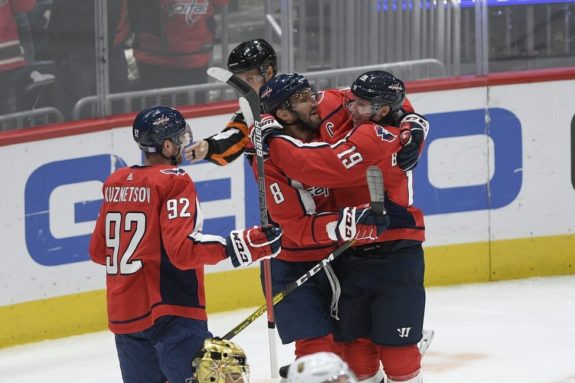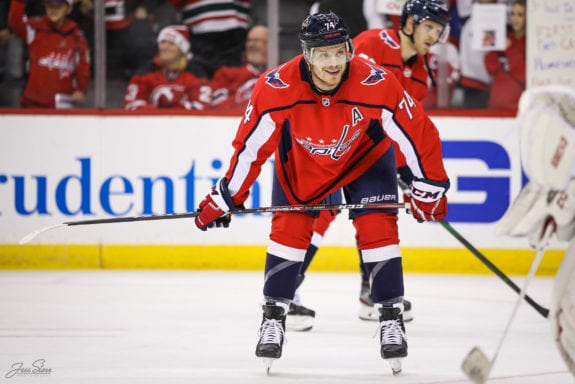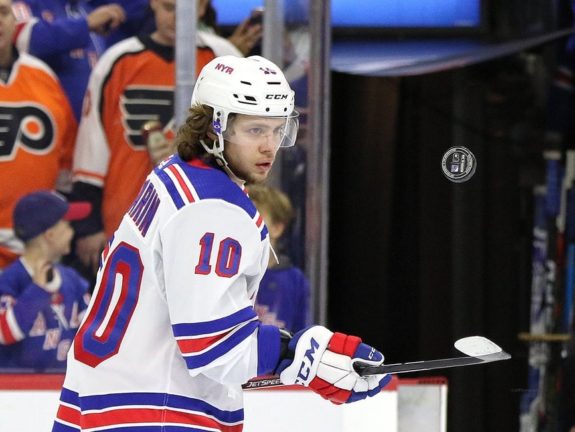Different people have different ideas of what a Stanley Cup-winning team looks like. Some believe that the fast-paced and skilled nature of today’s NHL is superior to the size and physicality of the 2000s. Contrarians turn to the 2018-19 St. Louis Blues as an example of the rough and tough championship team that would rather throw the body than stick-check.
Regardless of playstyle, there is one common factor that all Cup-winning teams share: talent in the right places. Obviously, no one wins a championship without talent. But that alone does not guarantee success. Most New York Rangers fans would agree that, as of right now, the team does not have enough talent to be a contender. However, fans also understand that certain players are essential to the foundation of success. Who are these players and what else are the Rangers missing?
The Winning Formula
After years of research (30 seconds of me thinking about the last 10 Cup-winning teams), I have come to the logical conclusion that there is only one roster-building strategy that leads to championships. Sarcasm aside, there’s a trend for success that makes a lot of sense.
A Stanley Cup-winning roster is led by an elite top-line center who is usually flanked by an elite winger. On the second line is a center either of the same elite caliber or a small step behind. Look at the back-to-back Cup-winning Pittsburgh Penguins. With Sidney Crosby and Evgeni Malkin up the middle, and Phil Kessel on the wing, they provided the offense for consecutive championships.
The 2017-18 Washington Capitals had the same structure. Evgeny Kuznetsov and Nicklas Backstrom dominated the center of the ice, as the great Alex Ovechkin netted 15 goals during the postseason.

The Selke Trophy-winning Ryan O’Reilly led the 2018-19 St. Louis Blues to their first Stanley Cup in franchise history. He was flanked by Russian sniper Vladimir Tarasenko, and anchoring the 2nd forward line was the versatile Brayden Schenn.
The 2019-20 Tampa Bay Lightning were slightly unique. Their lineup was similar to the Capitals and Penguins. Steven Stamkos has historically been their premier center, but it was Brayden Point who stepped up big time on the top line while Stamkos was injured. Anthony Cirelli proved he is a valuable second-line center, and Nikita Kucherov proved why he is a top-five winger in the league.
However, it isn’t just an elite forward group that wins the Cup. All of these teams also had an All-Star defenseman, and received clutch goaltending.
Kris Letang provided Pittsburgh with offense from the backend, while young Matt Murray played at an All-Star level in net at the age of 22.
John Carlson and Braden Holtby did the same for Washington. Holtby may not have had a great save percentage throughout the playoffs, but he made one of the most clutch saves in Stanley Cup Final history when he robbed Alex Tuch with his stick in Game 2.

Norris candidate Alex Pietrangelo anchored St. Louis’s blue line, while Jordan Binnington, a goalie who most people didn’t know existed until February 2019, proved he was an elite goaltender.
For the Lightning, it doesn’t get much better than 2019 Vezina-winner Andrei Vasilevskiy in net. Add in the 2018 Norris and 2020 Conn Smythe Trophy-winning Victor Hedman on the blue line and you wonder why Tampa Bay didn’t win the Cup sooner. Hedman is crucial to the Lightning, and he’s a favorite to win the Norris in 2021.
If these four examples aren’t enough to prove my point, here are two more:
2014 LA Kings: Anze Kopitar, Jeff Carter, Marian Gaborik, Drew Doughty and Jonathan Quick
2011 Boston Bruins: Patrice Bergeron, David Krejci, Brad Marchand, Zdeno Chara and Tim Thomas
Rangers Right Now
If the winning formula includes: two elite centers, an All-Star winger, a Norris caliber defenseman and a goalie who can come through in the clutch, what exactly do the Rangers need to compete?
Let’s start on the wing with Artemi Panarin. He is elite. It is not hard to imagine him hoisting the Cup. With some of the best hands in the league, the vision that rivals Patrick Kane and a young Joe Thornton, Panarin is an asset that New York can not afford to waste.

The questions arise with the team’s center depth. Mika Zibanejad proved last season that he is capable of driving a top line. But his health is always a concern. A healthy Zibanejad is an elite two-way center who can put up 70 points a season without a winger like Panarin next to him at 5-on-5.
But, behind Zibanejad on the depth chart at center is question marks. Is Ryan Strome a legitimate 60-point center, or was that just a byproduct of skating with Panarin? Can Filip Chytil turn into a definite top-six center and be one half of a dynamic duo with Panarin, or is he a 40-point scorer at best?
Who doesn’t want Jack Eichel on their team? Is it realistic for Eichel to one day be a Ranger? Nobody knows for sure, but the Rangers will not be a true contender until their second-line center questions are answered.
Norris caliber defensemen don’t grow on trees. More often than not, they are drafted and developed within the same organization before they hit stardom. Though not drafted by New York, Adam Fox is as close to a Norris caliber defenseman as they have. He has been a bright spot after a rather dark start to the 2020-21 campaign, and we can all hope that he continues to develop into the elite two-way defenseman that he can be.
In net, Igor Shesterkin is not off to the start that he had hoped for. With that said, the season is still relatively young, and so is he. The 25-year-old netminder out of Moscow has plenty of time to develop into a suitable replacement for Henrik Lundqvist.
The Plan
The Rangers are in an interesting spot. They have a few pieces who can make significant contributions now, as well as a handful of young talent that they are attempting to grow such as K’Andre Miller, Kaapo Kakko, and Alexis Lafreniere. The rebuild has gone much faster than originally expected, and fans are in limbo between riding out the rebuild and winning as soon as possible.
It would make the most sense to not rush things, and stick to the rebuild over the next two seasons. In that time, management should have three major priorities: re-sign Zibanejad, figure out the second-line center situation, and continue to progress Kakko and Lafreniere.
With a salary cap that isn’t going up any time soon, the Rangers will likely find themselves in a tight spot in a few years. It is up to management to allocate money to not just the “best players” but the “right players”. And those “right players” should be top-six centers, a top defenseman and a starting goalie. This may lead to the departure of some fan favorites, but if it means a Stanley Cup for New York, the tough decisions will be worth it in the end.